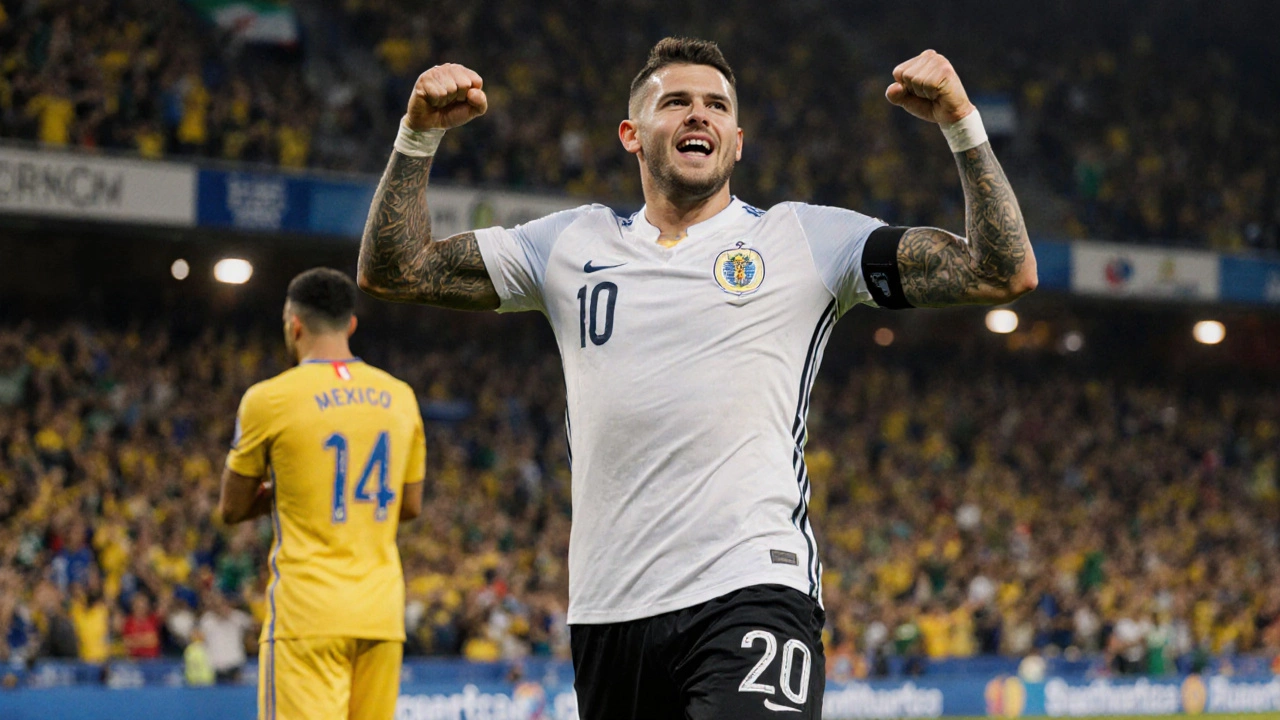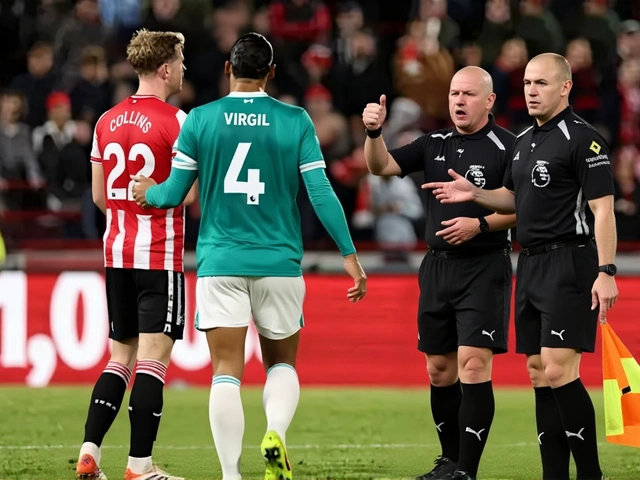On a chilly Saturday night in Torreón, Mexico, the Uruguay national team and Mexico played out a tense, goalless stalemate at Estadio Corona — a match that felt less like a friendly and more like a pressure test for both sides heading into the 2026 FIFA World Cup. The real story, though, wasn’t on the pitch. It was in the stands, in the locker rooms, and in the absence of Federico Valverde, the 26-year-old midfield engine whose absence left a gaping hole in La Celeste’s rhythm.
Valverde’s Absence Changes Everything
Uruguay confirmed before kickoff that Federico Valverde, captain and linchpin of both Real Madrid CF and the national team, would not play due to injury. The news, first reported by Sports Illustrated, came as a blow. Valverde, who has earned 58 caps since his 2017 debut and earns €12 million annually under contract with Real Madrid through 2027, had been the one player Uruguay couldn’t afford to lose. His energy, his tackling, his ability to cover ground from box to box — it’s not easily replaced. Without him, Uruguay looked disjointed in transition. Midfielder Nahitan Nández, who received a yellow card at 58’, tried to fill the void, but he’s more of a destroyer than a creator. The team struggled to build momentum, especially after losing Darwin Núñez too — another major absence.Mexico’s Struggles Continue — And Fans React
For Mexico, the draw extended a worrying streak: five straight matches without a win since their 2-1 CONCACAF Gold Cup Final triumph over the United States on July 12, 2025. Head coach Javier 'Vasco' Aguirre, back in charge after a decade, faced mounting pressure. The crowd at Estadio Corona — a 30,000-seat venue in Coahuila — turned hostile. Chants of "P*to" echoed toward goalkeeper José 'Tala' Rangel, and "Fuera Vasco" rained down on Aguirre. It wasn’t just frustration; it was a cultural moment. After the final whistle, Raúl Jiménez of Fulham FC spoke up: "Maybe that’s why we play in the U.S." The comment, reported by Viva Liga MX, cut deep. It wasn’t just about this match — it was about identity, about the disconnect between the team and its most passionate supporters.Tactical Battle and Missed Chances
The game itself was a chess match with few clear winners. At 18’, Mexico pressed high but lacked precision. Hirving Lozano, fresh off his move to AC Milan, fired a curler wide at 20’. By 35’, Jiménez found himself one-on-one with Uruguay’s keeper, only to be denied by a fingertip save. The second half saw both sides shuffle personnel — Mexico made a triple substitution at 65’, while Uruguay tried to tighten up. At 66’, a Mexican counter nearly broke through; at 67’, Uruguay’s Nahitan Nández nearly broke the deadlock with a long-range effort. But the final whistle blew with zero goals — and zero momentum for either side.
Why This Match Matters Beyond the Scoreline
This wasn’t just another friendly. For Mexico, the 2026 FIFA World Cup is a home tournament. Every match is a dress rehearsal — and every misstep is magnified. Aguirre’s tactical decisions, his squad selection, his ability to unify a fractured fanbase — all under scrutiny. For Uruguay, the absence of Valverde and Núñez exposed a troubling dependency on star power. Marcelo Bielsa, who took over as head coach on May 12, 2023, has always preached intensity. But without his two most dynamic attackers, his system looked brittle. The team managed only 38% possession — their lowest in a competitive match since 2022.What’s Next for Both Teams?
Uruguay’s next test comes in March 2026, when they face Brazil in a crucial CONMEBOL qualifier. Valverde’s return — if healthy — will be critical. His last appearance for Real Madrid was a 5-2 win over Girona on September 27, 2025, and he played 90 minutes in a 3-1 victory on October 4. If he’s not fit by March, Bielsa may need to rebuild his midfield entirely. Mexico, meanwhile, has three more friendlies before the World Cup. They’ll need to find chemistry without relying on the same attacking trio. And they’ll need to win — not just to qualify, but to quiet the crowd.
Background: The Weight of History
This match was more than a tune-up. Uruguay, two-time World Cup champions, are used to being favorites. Mexico, despite their regional dominance, has struggled to translate Gold Cup success into World Cup consistency. The last time they hosted a World Cup was 1986 — and even then, they were eliminated in the quarterfinals. Now, with the tournament returning to North America in 2026, the stakes are higher than ever. For both teams, this 0-0 draw felt like a missed opportunity — and a warning.Frequently Asked Questions
How critical is Federico Valverde to Uruguay’s World Cup chances?
Extremely. Valverde has played in 58 of Uruguay’s 62 matches since 2017, including every World Cup qualifier since 2021. His 12.3 km average distance covered per match leads the team — more than any other player in CONMEBOL. Without him, Uruguay’s midfield lacks structure, and their ability to press high or recover quickly drops significantly. Bielsa’s system relies on relentless movement, and Valverde is the engine.
Why did Mexico’s fans turn on their own team and coach?
Mexico’s last five matches have been uninspiring: losses to Costa Rica and Jamaica, draws against Chile and Colombia, and now this 0-0 against Uruguay. Fans expected more from a team hosting the 2026 World Cup. Aguirre’s tactical conservatism and reliance on aging players like Jiménez and Lozano have frustrated supporters who want youth and intensity. The chants weren’t just about this game — they were about a decade of unmet expectations.
Has Valverde missed other matches due to injury this year?
Yes. He sat out Uruguay’s 2-1 CONMEBOL World Cup qualifier against Venezuela on August 17, 2025, though that absence was initially attributed to "load management." This time, it’s a confirmed muscular injury. Real Madrid’s medical staff confirmed he’s been sidelined since October 18, 2025, after a collision with Real Sociedad’s Mikel Oyarzabal. His return is expected no sooner than late January 2026.
What impact does the absence of Darwin Núñez have on Uruguay’s attack?
Núñez’s pace and physicality were crucial for stretching defenses. Without him, Uruguay’s front line looked static. Their top scorer in 2025 with 11 goals in 12 appearances, his absence forced Bielsa to play 36-year-old Luis Suárez as the lone striker — a risky move against a physical Mexican defense. Suárez, while still dangerous, can’t cover the same ground or hold up play as effectively as Núñez.
Is Estadio Corona a typical venue for Mexico’s friendlies?
No. Mexico usually plays friendlies in larger cities like Guadalajara or Mexico City, or in the U.S. to tap into the diaspora. Torreón, a smaller industrial city, hosted this match to test regional support ahead of 2026. The hostile reaction suggests the team hasn’t built strong local connections yet — a problem for a country that needs to sell out 60+ games across three host nations.
What does this result mean for Mexico’s World Cup prospects?
It’s a red flag. Hosting the World Cup doesn’t guarantee success — look at South Africa in 2010. Mexico needs to find cohesion, improve defensive transitions, and generate consistent scoring chances. A 0-0 draw against a weakened Uruguay team, without their two best players, isn’t encouraging. If they can’t beat mid-tier opponents now, they’ll struggle against Brazil, Germany, or Spain in the group stage.



